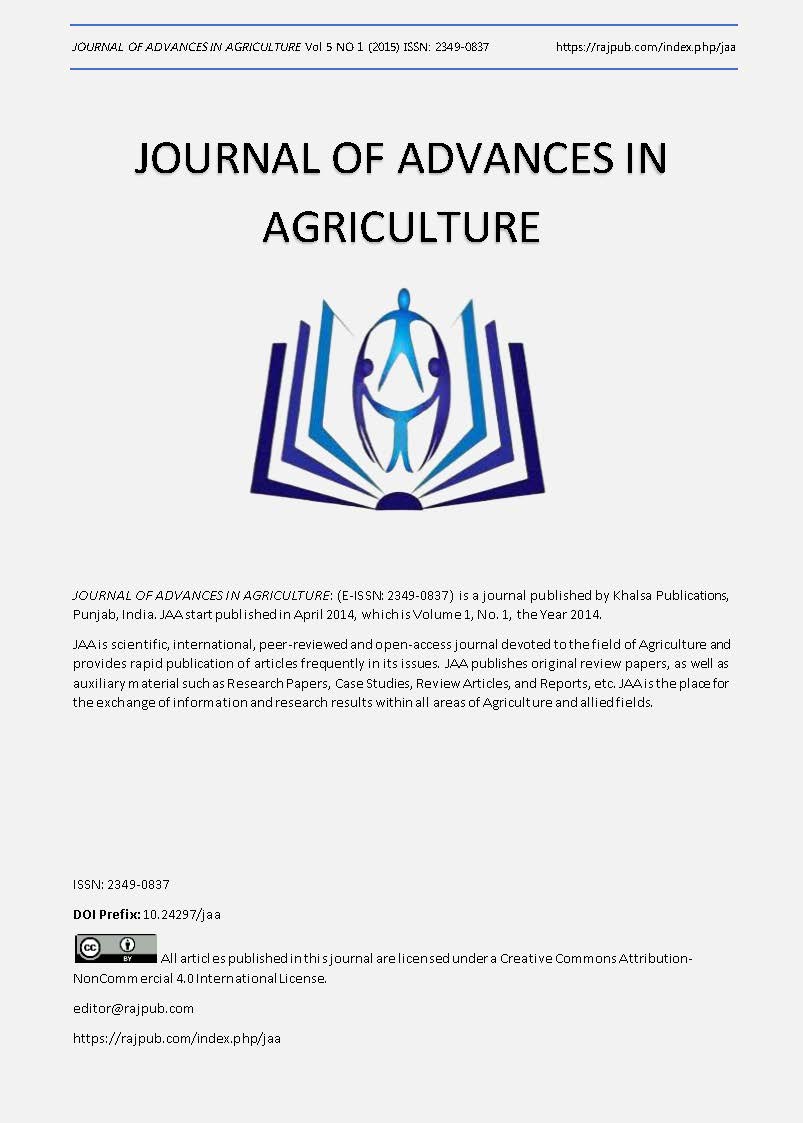Screening for resistance of grape varieties to powdery mildew (Erysiphenecator) disease
DOI:
https://doi.org/10.24297/jaa.v5i1.4509Keywords:
Erysiphenecator, Grapevine, Powdery mildew, Resistance, Severity.Abstract
This study was conducted to evaluate the susceptibility of grapevine varieties to powdery mildew. Powdery mildew is a disease caused by a fungal, Erysiphenecator, and an obligate parasite of grapevine (Vitisvinifera L.). Powdery mildew causes drastic yield losses of 50 to 70%. Commercial grapevines grown in producing countries are susceptible to powdery mildew. Use of fungicides to control the disease is expensive and not environmentally friendly. Therefore, use of grapevine resistant varieties to powdery mildew is cost-effective control method. In this study, ten varieties (Black rose, Regina, Queen of Vineyards, Alphoncelavallee, Makutupora red, Chancellor, Halilibelyji, Syrah, Ruby seedless and Makutupora white) were screened for resistance to powdery mildew, using artificial inoculation of spore suspension and dry inoculums. Infected grape leaves were sampled from the field and grounded to obtain powder which was used as dry inoculum. The spore suspension inoculum was made by mixing powder with sterilized distilled water. The inoculation was done in two blocks with concentration of 2x105 spore/ml. Disease severity was evaluated based on a scale of 0 5; 0, means immune and 5, high level of disease severity. Results showed significant difference (P<0.05) of disease among grape vine varieties evaluated. It was found that 11.1% were resistant, 33.4% tolerant and 55% susceptible to disease. Grapevine variety Chancellor showed the highest level of resistance, and Black rose the most susceptible. The study demonstrates the effectiveness of using inoculation methods in screening resistance to powdery mildew.
Downloads
Downloads
Published
How to Cite
Issue
Section
License
 All articles published in Journal of Advances in Linguistics are licensed under a Creative Commons Attribution 4.0 International License.
All articles published in Journal of Advances in Linguistics are licensed under a Creative Commons Attribution 4.0 International License.




